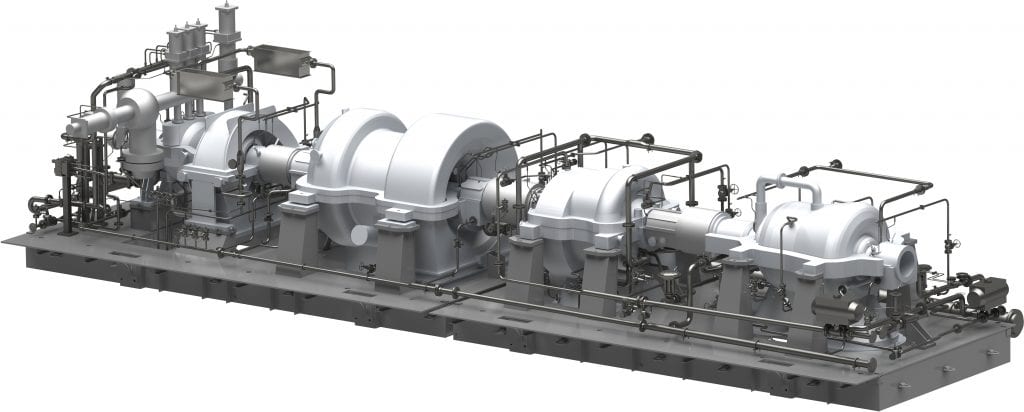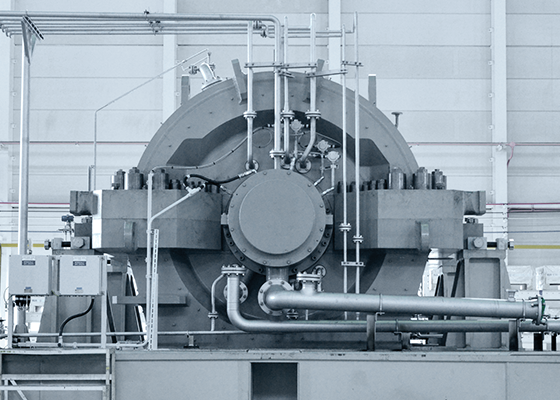FACTORS IMPACTING RELIABILITY - CENTRIFUGAL COMPRESSORS

Design: The design of the centrifugal compressor is a critical factor that can impact reliability. Design considerations, such as materials used, operating conditions, and clearances between rotating and stationary parts, can impact the reliability of the compressor. To improve reliability, it is recommended to use advanced materials, incorporate design features such as improved clearances and reduced vibration, and ensure that the compressor is designed for the intended operating conditions.
Operating conditions: The operating conditions under which the compressor operates can impact its reliability. Factors such as temperature, pressure, flow rate, and the composition of the gas being compressed can all impact reliability. To improve reliability, it is recommended to ensure that the compressor is operated within its design parameters, and that the operating conditions are monitored and controlled.
Maintenance: Proper maintenance is critical to ensuring the reliability of a centrifugal compressor. Regular maintenance, such as lubrication, cleaning, and component replacements, can help prevent failures and extend the life of the compressor. It is recommended to implement a comprehensive maintenance program, use OEM-approved parts and materials, and maintain an adequate inventory of critical spare parts.
Training: Proper training of personnel is critical to ensuring the reliability of a centrifugal compressor. Personnel who operate and maintain the compressor should be properly trained on its operation, maintenance, and troubleshooting. It is recommended to provide regular training to personnel and to ensure that they are knowledgeable about the compressor and its components.
Monitoring: Monitoring the performance of the compressor is critical to identifying potential issues before they lead to failures. Regular monitoring, using techniques such as vibration analysis, can help detect issues such as bearing wear, misalignment, and imbalance. It is recommended to implement a regular monitoring program and to use advanced monitoring techniques.
By addressing these factors, users and manufacturers can work together to improve the reliability of centrifugal compressors in both new and existing plants. Regular maintenance, proper training, and monitoring are key to ensuring that the compressor operates reliably and efficiently.
WHY, WHEN, WHERE, WHAT, WHICH, HOW TO APPLY THE RELIABILITY FACTORS IN ENGINEERING & DESIGN
To apply reliability studies and analysis as part of the engineering and design process in centrifugal compressors, with the goal of improving maintainability, reliability, availability, and safety in existing plants and new projects for the oil, gas, and petrochemical industries, let’s address the questions of why, when, where, what, which, and how:
Why Apply Reliability Studies and Analysis:
- Reliability studies and analysis help identify potential failure modes, their causes, and their impact on the performance and availability of centrifugal compressors.
- They provide insights into the reliability characteristics of the system, enabling improvements in design, component selection, and maintenance strategies.
- By proactively assessing reliability, appropriate measures can be implemented to reduce failures, improve uptime, and enhance safety.
When to Apply Reliability Studies and Analysis:
- Reliability studies and analysis should be conducted during the early stages of the engineering and design process for centrifugal compressors.
- It is essential to consider reliability factors from the concept and planning phase to ensure that design decisions align with reliability objectives.
- Reliability assessments should also be performed periodically throughout the life cycle of the compressors to track performance, identify areas for improvement, and support maintenance decisions.
Where to Apply Reliability Studies and Analysis:
- Reliability studies and analysis should be applied to both existing plants and new projects involving centrifugal compressors.
- Existing plants can benefit from reliability studies to identify areas for improvement, evaluate the effectiveness of maintenance practices, and implement targeted enhancements.
- In new projects, reliability studies are crucial to ensure that the design meets reliability requirements, guiding decisions on component selection, redundancy, and maintenance strategies.
What to Consider in Reliability Studies and Analysis:
- Identify critical components and subsystems within the centrifugal compressor system that significantly impact reliability, such as impellers, bearings, seals, and control systems.
- Evaluate failure modes and their effects on reliability, considering factors like component wear, fatigue, corrosion, and system-level issues.
- Analyze operational conditions, maintenance practices, and environmental factors that may influence reliability.
Which Methods and Techniques to Use:
- Utilize reliability analysis techniques such as failure mode and effect analysis (FMEA), fault tree analysis (FTA), and reliability block diagrams (RBD) to assess system reliability and identify potential failure modes.
- Conduct statistical analysis of failure data to determine failure rates, mean time between failures (MTBF), and mean time to repair (MTTR) for critical components.
- Use tools such as reliability prediction software to estimate system reliability based on component reliability data and operational profiles.
How to Apply Reliability Studies and Analysis:
- Define reliability objectives and metrics, such as desired system uptime, availability targets, and reliability growth goals.
- Collect relevant data on component reliability, failure history, maintenance records, and operational conditions of the centrifugal compressors.
- Analyze the data to identify common failure modes, their causes, and their impact on system reliability.
- Implement design improvements based on the findings, such as selecting more reliable components, improving maintenance procedures, and enhancing system redundancy.
- Continuously monitor and track reliability performance, analyze failure data, and update reliability models to drive ongoing improvements.

PROCEDURES, ACTIONS, STUDIES, MITIGATION, RECOMMENDATIONS TO APPLY RELIABILITY FACTORS IN ENGINEERING & DESSIGN
To apply reliability factors in the design and engineering of centrifugal compressors, with the aim of improving maintainability, reliability, availability, and safety in existing plants and new projects within the oil, gas, and petrochemical industries, the following procedures, actions, studies, mitigations, and recommendations can be considered:
Reliability Planning:
- Define reliability goals and objectives for the centrifugal compressor system, considering the desired levels of reliability, availability, and safety.
- Establish reliability specifications and requirements based on industry standards, codes, and regulations.
- Develop a reliability plan that outlines the steps and activities to achieve the desired reliability outcomes.
Failure Mode and Effects Analysis (FMEA):
- Conduct a comprehensive FMEA to identify potential failure modes, their causes, and their effects on system reliability.
- Prioritize failure modes based on their criticality and likelihood of occurrence.
- Develop mitigation strategies and design improvements to reduce the likelihood and impact of identified failure modes.
Reliability-Centered Maintenance (RCM):
- Apply RCM principles to determine the appropriate maintenance tasks, intervals, and strategies for critical components of the centrifugal compressor.
- Prioritize maintenance activities based on their impact on reliability and safety.
- Implement condition-based maintenance techniques, such as vibration analysis, oil analysis, and thermography, to detect potential issues and take proactive maintenance actions.
Component Selection and Quality:
- Select components from reputable manufacturers with a proven track record of reliability and quality.
- Consider the reliability data and performance characteristics of components during the selection process.
- Establish quality control measures to ensure that components meet the required reliability and performance standards.
Redundancy and Backup Systems:
- Evaluate the criticality of components and subsystems in the centrifugal compressor system and implement redundancy where necessary.
- Design backup systems that can quickly and seamlessly take over in the event of component failures.
- Consider the use of standby equipment, redundant control systems, and emergency shutdown systems to improve system availability and safety.
Reliability Testing and Validation:
- Conduct reliability testing during the design and development stages to assess the performance and reliability of the centrifugal compressor system.
- Perform accelerated life testing, environmental testing, and reliability growth testing to identify and address potential weaknesses and improve system reliability.
- Validate the reliability of the system through field testing and monitoring to ensure that it meets the expected performance and reliability targets.
Documentation and Lessons Learned:
- Maintain comprehensive documentation of the design, engineering, and reliability-related decisions throughout the lifecycle of the centrifugal compressor system.
- Establish a system for capturing and sharing lessons learned from past projects and maintenance activities.
- Continuously review and update the documentation based on feedback, field experience, and reliability data.

